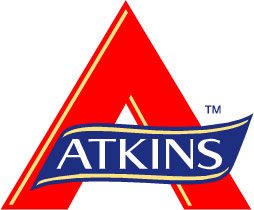?A closer look at the Atkins Diet
You feel bitter that summer has abandoned you, and cold chilly breeze has decided to stay put like a shameless guest. You remember your favourite pair of the tall, stylish brown boots you bought last year, and your mood brightens. Excited, you don yourself in accessories and clothing that complement the footwear. Finally, as you are putting on your favourite pair of tall, stylish brown boots, you realize the zip is halfway stuck. Annoyed, you try to pull it up, albeit unsuccessfully. Then you look down to make a heart wrenching discovery; it is your calf fat. You have out-expanded your boots, thanks to a sunshine filled summer spent eating out on restaurant patios.
We have all been there, coming across a dress we love that does not exist in our size because God made us special that way, or trying hard to look slim and sexy for the upcoming high-school reunion, to exact revenge on our arch nemesis from back in the day. As the holiday season approaches, many will be tempted to go on diets that promise quick results, and the Jenny Craigs and the Weight-Watchers will see their businesses flourish amidst economic recession. Immensely popular over the past decade, the crash diet Atkins has enticed many with its promise of helping lose up to 15 lbs over a period of two weeks. If this is on your pre-holiday agenda, read further for a quick synopsis.
Officially called the Atkins Nutritional Approach, the diet created by namesake Robert Atkins focuses on a low-carbohydrate, high-protein and fat consuming regimen. As the diet claims, it "turns your body into a fat-burning machine". By reducing the amount of carbohydrates consumed per day and substituting them with protein, fibre and fat, it forces body's metabolism to burn fat as fuel for energy.
The step-by-step process of Atkins includes:
Induction Phase: The strictest phase of the diet, it sees the highest amount of weight-loss, as consumption of only 60 net carbohydrates per day is allowed. While all alcohol and caffeinated drinks are off the list, the permitted foods include all seafood, meat, cheese and butter, and high-fibre and low-carb vegetables. A minimum of two week period is suggested for dieters, and even longer if they are able to tolerate and have a large weight-loss goal to achieve.
Ongoing Weight Loss: This goal involves slowly increasing the consumption of carbohydrates by adding low-carb foods such as nuts, seeds, berries and other such fruits, with the addition of more dairy products. This phase typically follows a dramatic weight loss, and attempts to gradually reintroduce carbohydrates into the eating regimen.
Pre-Maintenance: When a dieter is a mere 10 lbs away from achieving the desired goal, this step needs to be undertaken. During this period, the process of reintroducing carbohydrates accelerates, and dieters can begin to enjoy starchy vegetables and whole grain foods again. This is a learning curve as well, where the dieter will have to determine a good carbohydrate level that maintains the weight loss.
Lifetime Maintenance: As the name suggests, this phase is supposed to last your lifetime. At this point, the dieter is to have found the Atkins Carbohydrate Equilibrium(ACE), the number of net carbohydrates per day that will help maintain the desired weight.
Visit http://cauk.atkins.com/ for a detailed list of accepted foods in each phase.
The promise of a 15 lb weight loss over two weeks sounds highly alluring. However, with health experts claiming a maximum of 2 lbs per week as a healthy weight-loss, one needs to make sure if a drop down this fast really is worth it.

According to the American Health Association (AHA), a low carbohydrate-high protein diet keeps a dieter in the permanent state of ketosis(the process of fatty-acids being broken down to use as fuel for energy), which the brain reads as being in the state of fasting. Dieters who embark upon a low carbohydrate-high protein diet consume significantly less amount of carbohydrates, 30 to 90% lower than the daily intake recommended by the AHA. Subsequently, the protein, fat, and saturated fat intake is almost 2.5 times higher than the suggested consumption. Contrary to the widespread belief that such diets(such as the Atkins) almost always result in significant weight-loss, statistics show that these diets carry a failure rate of 20-43%, similar to other weight-loss regimens. Adverse affects of such diets may include: dehydration, constipation, headaches, loss of hair, and more seriously, osteoporosis, fractures, and renal insufficiency. It is then suggested that a dieter's focus should be on a low-fat diet that does not create this large a nutritional imbalance, as the reported success rate is almost equal among all diets.
Conversely, another study that tested various forms of diets on lab rats suggested that during the state of ketosis, the body will continue utilizing fat to produce glucose for proper brain functioning. The study placed rats on two different diets; a low-carbohydrate high-protein diet, and a low-fat high-carbohydrate diet. The results showed a significant loss in brain function in rats on the latter diet, as relying heavily on protein and carbohydrates, and very little on fat, saw a considerable reduction in glucose production over a period of time. However rats placed on a low-carbohydrate and high-protein and fat diet did not show any significant loss in glucose production, suggesting that a dieter on a ketogenic diet will not incur any significant adverse effects as compared to the opposite kind.
Various studies have been conducted arguing for and against going on a diet like the Atkins. These studies, however, are based on short-term experiments, and do not monitor progress or decline in health over a longer period of time. These are mere speculations that you can base your decision on. Perhaps it is smart to stay on an Atkins diet for a short period of time, and return to it after some time has lapsed. Why take the risk of developing a serious adverse outcome?
It is four months later. You have achieved your weight loss goal. You are ready to strut around in your favourite pair of tall, stylish brown boots. Excited, you don yourself in matching accessories and clothing. You put on your boots, successfully, and step out into the snow storm. Now you need to go back in and change into more weather appropriate boots. Fall has already left.
Next time, start early. Good luck.
Sources: atkins.com, heart.org, and news.bbc.co.uk
Farah Khan
Author
Farah joined ANOKHI LIFE while finishing up her degree in English Literature and Writing at the University of Toronto. Her position since then has expanded across all departments, everything from office administration and corporate affairs, to ANOKHI's online presence and events. . .














































































































